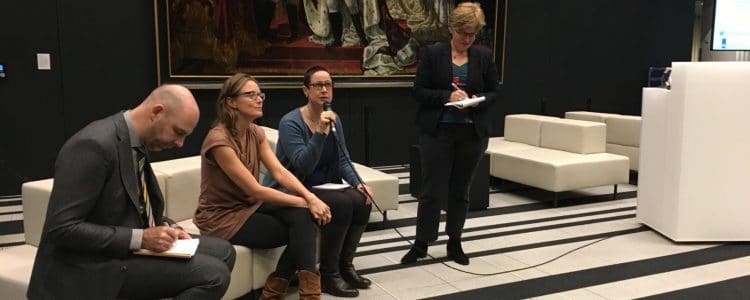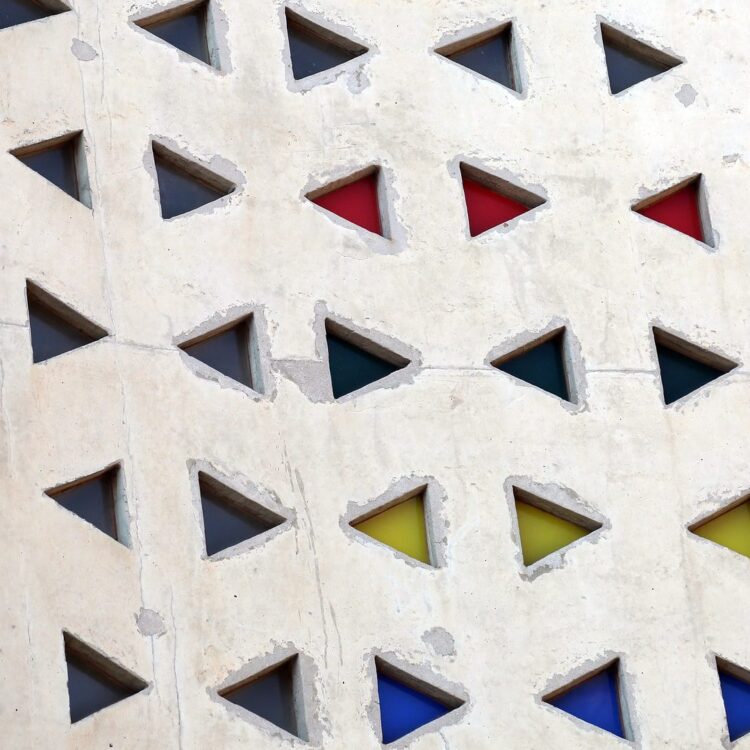
Official development assistance (ODA) can help civil society organizations (CSOs) find sources of funding of their activities. Yet, the procedures and requirements within this system can also prevent small community-based organizations (CBOs) from doing their day-to-day work, while CBOs operating outside the ODA system can sometimes respond to emergency situations more quickly and flexibly. Hence, the question is how flexibility in funding flows from international donors can be promoted to provide space for CBOs to operate more effectively.
The seminar ‘Chaos of urgencies for CBOs’, jointly organized by the Netherlands Ministry of Foreign Affairs (MFA) and INCLUDE, first outlined this issue through a presentation by Dr Naomi Van Stapele (VU University Amsterdam), from the consortium ‘CBOs within the official development aid system in Kenya’. Van Stapele introduced the concept of ‘chaos of urgencies’ as it applies to CBOs in urban, marginalized and criminal settings in Kenya. The CBOs often face emergency situations, such as police violence, disasters, discrimination and health situations, which require ad hoc reactions.
In Nairobi, Kenya, two CBOs studied in the research project face these emergencies on a daily basis. The first is the gay male sex worker-led organization HOYMAS. It operates within the ODA system with more than 20 donors providing it with funding. The second is the Ghetto Foundation, a community-led organization situated in one of the most violent areas of Nairobi. Because of its association to gangs and violence, donors are reluctant to provide funding for the Ghetto Foundation and, hence, it operates outside the ODA system, finding resources elsewhere. Although the two organizations are different in nature, they both find effective ways to operate within the political arena: HOYMAS attempts to decriminalize homosexuality, while the Ghetto Foundation attempts to improve the accountability of the police. Both do so at various political levels.
Yet, the research found that the requirements of the ODA system limit HOYMAS in responding to the ‘chaos of urgencies’. Increasingly, the ODA system acknowledges CBOs as partners in development arrangements, which is widely seen as critical for sustainable development initiatives. Yet, according to Van Stapele, these CBOs are mostly viewed in terms of their functionality for the projects they participate in or for other actors. They are seldom understood as development actors in their own right and assumed theories about their functioning do not match local realities. This was confirmed by discussant Sally Hendriks (AidsFonds), who personally experienced the difference between the requirements of working as an international donor versus the chaos experienced as a local community worker.
As a result, several achievements of CBOs are not (fully) recognized. The project has, therefore, developed a new action research method, which is designed and conducted by community members themselves: community-led research and action (CLRA). While methods such as participatory rural appraisal acknowledge the importance of local involvement, this method goes one step further by letting community researchers take the lead in all phases of research and action, including the design of methods and choice of questions posed. The idea is that this increases ownership and, consequently, commitment to the research in communities, thereby facilitating a better understanding of the actual issues.
According to Van Stapele, in the case of the Ghetto Foundation this method has led to the discovery of the reasons behind the harassment of gang members by the police. Although gang members saw themselves as security guards for women in the community, these women often felt threatened. As a result, women reported these men to the police, which resulted in their harassment. By gaining a better understanding through this research method, the researchers were able to enact change: they bought yellow vests and registered themselves as private security with the police. This changed their relationship with the police and the women. Because of these type of changes, Van Stapele advocates for the CLRA method as, in her words, it is a “catalyst for durable change”. It also does more justice to the idea of interactive governance: this requires a better understanding of local power structures and empowering actors such as CBOs to change them. Hendriks supports this shift towards community-based evaluation methods, which is increasingly done by the AidsFonds.

Audience of people from the Ministry and researchers
In the discussion following the presentation, moderated by Karin Nijenhuis (INCLUDE), the main issue was how the agency of CBOs could be promoted within the ODA system. Although HOYMAS is an effective CBO, it is often hindered in dealing with emergencies by the need for managerial practices such as attending meetings and accountability mechanisms. In response, discussant Rob Sijstermans from the MFA stated that similar barriers constrain him: because a lot of his time is spent on donor coordination, and there is little opportunity to invest in a better understanding of CBOs. This includes a better understanding of the CBOs that the Ministry engages with, but also those it neglects. Hence, finding the right balance between the accountability mechanisms within the ODA, and the flexibility and context-specific support that CBOs require is essential.
Researchers present were eager to link up with Ministry representatives to discuss how the ODA system can be improved in this regard. Van Stapele and Lorraine Nencel (VU University Amsterdam and principal researcher within the same consortium) asked if points of connection can be found between this research method challenging ODA systems and the constraints identified by Sijstermans. The seminar, thereby, addressed one of the key objectives of the INCLUDE research programme ‘New roles of CSOs for inclusive development’: to test if the assumptions of the MFA about the functioning of CSOs hold true, and how this understanding can help to formulate a new civil society policy framework from 2019 onwards. In this case, several assumptions identified by the research project have been (partly) debunked: CBOs can be capable organizations in their own right and do not always need professional partners to make a sustainable impact.




